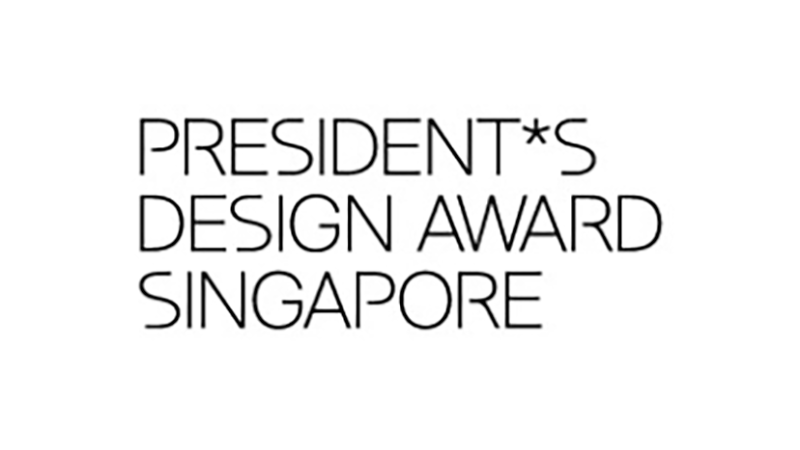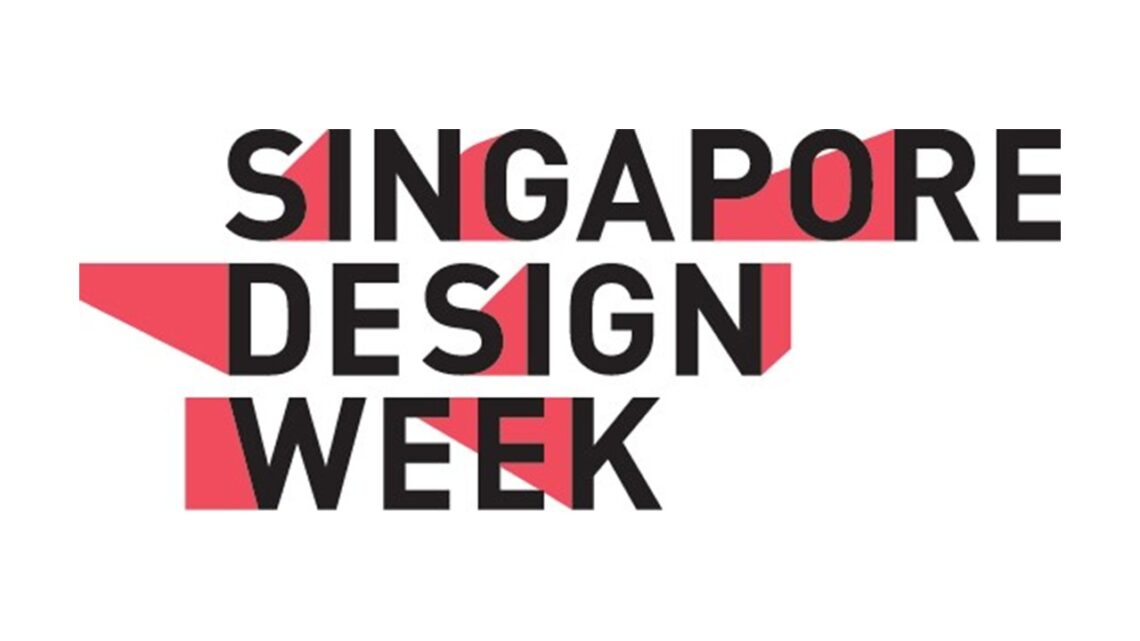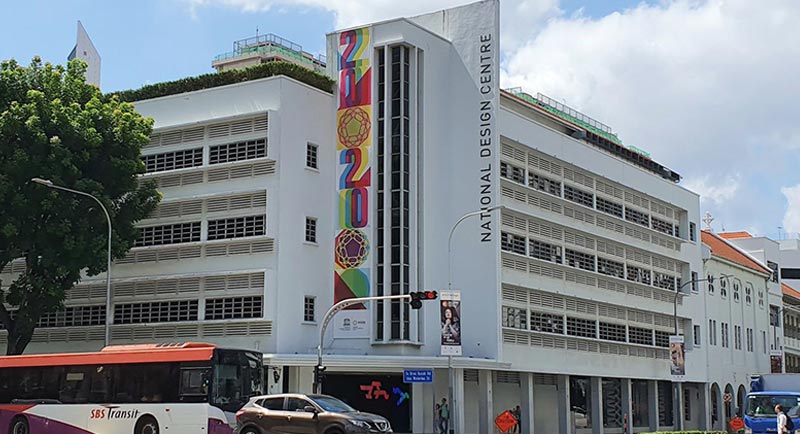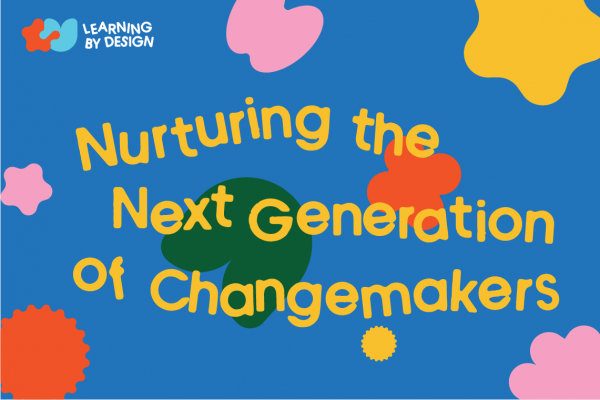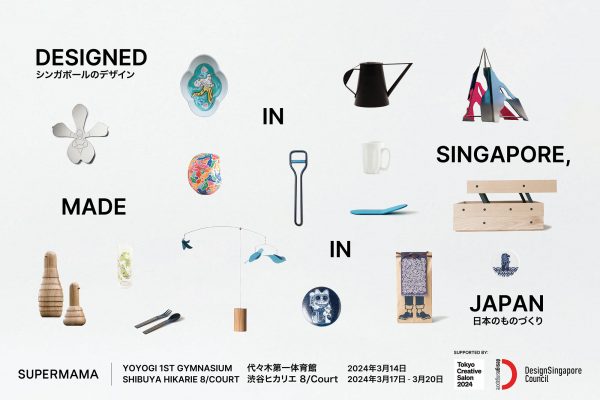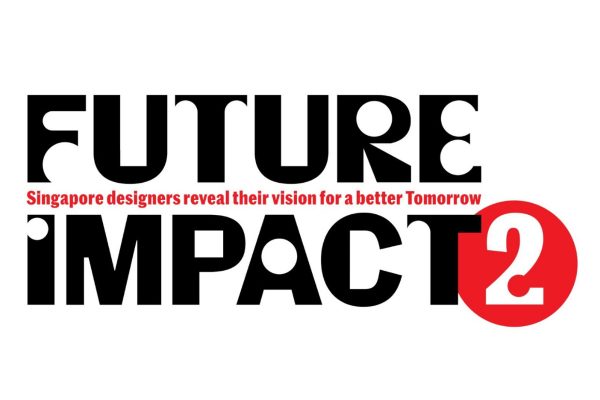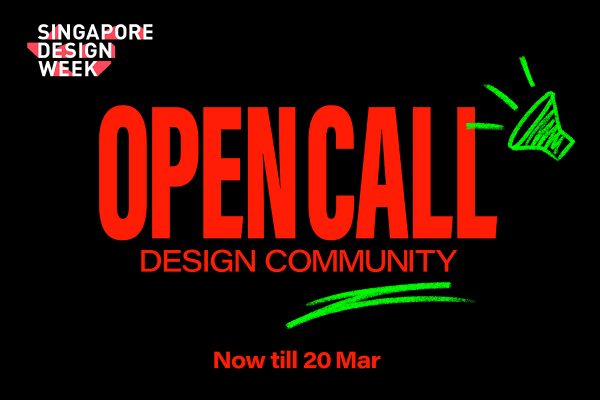How can we balance production and consumption with a finite pool of resources? The challenge is particularly pronounced in industries such as fashion, but even there it is possible to operate with less wasteful outcomes and nudge consumer behaviour, while upholding principles of quality and longevity. GINLEE Studio shows a way forward.
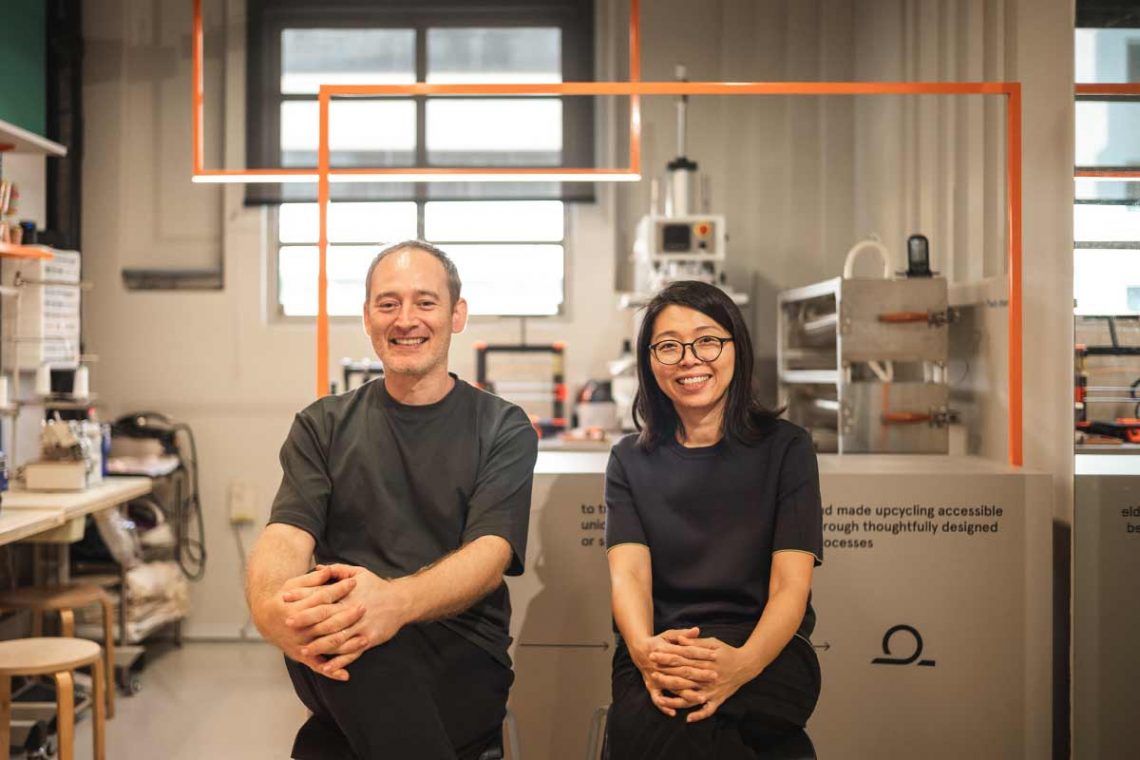
Article by Narelle Yabuka.
The inherent contradiction that lurks between the concepts of production, consumption, and sustainability represents one of the most difficult conundrums to grapple with today. In response, more designers and consumers are turning to circular principles to guide their decisions and choices, and seeking new approaches to old systems that are no longer acceptable in terms of the resource-waste equation.
Singapore-based fashion brand GINLEE Studio never operated as a fast-fashion company, the likes of which are bemoaned for their contributions to landfill among other problems. But even at the scale of a small local business, over-production of stock to satisfy an unknowable level of demand for colours and sizes would inevitably result in leftover items at the end of a season.
For GINLEE Studio’s Co-founders, fashion designer Gin Lee and industrial designer Tamir Niv, receiving returns of unsold consignment stock simply never felt right. “The worst nightmare is to get things back from a store because it didn’t sell, so we decided to do things differently,” says Niv. Adds Lee, “We felt like we could change what’s normal for our industry.”

Dresses on demand
In April 2020, Lee and Niv embarked on a process of redesigning aspects of their business to overcome the pain point of over-production. Rather than manufacturing multiples in every size and colour up front, they devised an optimised system for producing stock only if it is needed.
Their Get Order On Demand (G.O.O.D.) system offers customers a discount in exchange for a waiting time of three-to-five weeks while stock is produced in batches in accordance with orders received. “It’s like putting a new style on probation. We don’t produce the full quantity upfront,” explains Lee.

With the G.O.O.D. system, we are trying to slow down consumption. It encourages customers to be mindful – to be sure they really want this piece of clothing.
– Gin Lee
While the initial production run is smaller, regular retail purchases are still catered to – an important aspect of brand experience that Lee and Niv were keen to preserve. “We didn’t want to become a showroom,” says Lee.
“It’s a hybrid between pre-order and normal retail,” adds Niv. He continues, “We now produce about 30% of what we used to, and we no longer need to invest a lot of energy into discount sales at the end of the season.”
Producing less of course means earning less, and while the losses of heavy end-of-season markdowns could now be overcome, business viability concerns were a reality to be faced. Lee and Niv had a vision for an even more responsive mode of on-the-spot production of their signature pleated items, and they began conceptualising a way to marry this with another potential stream of revenue and customer engagement: an in-store experience of making.
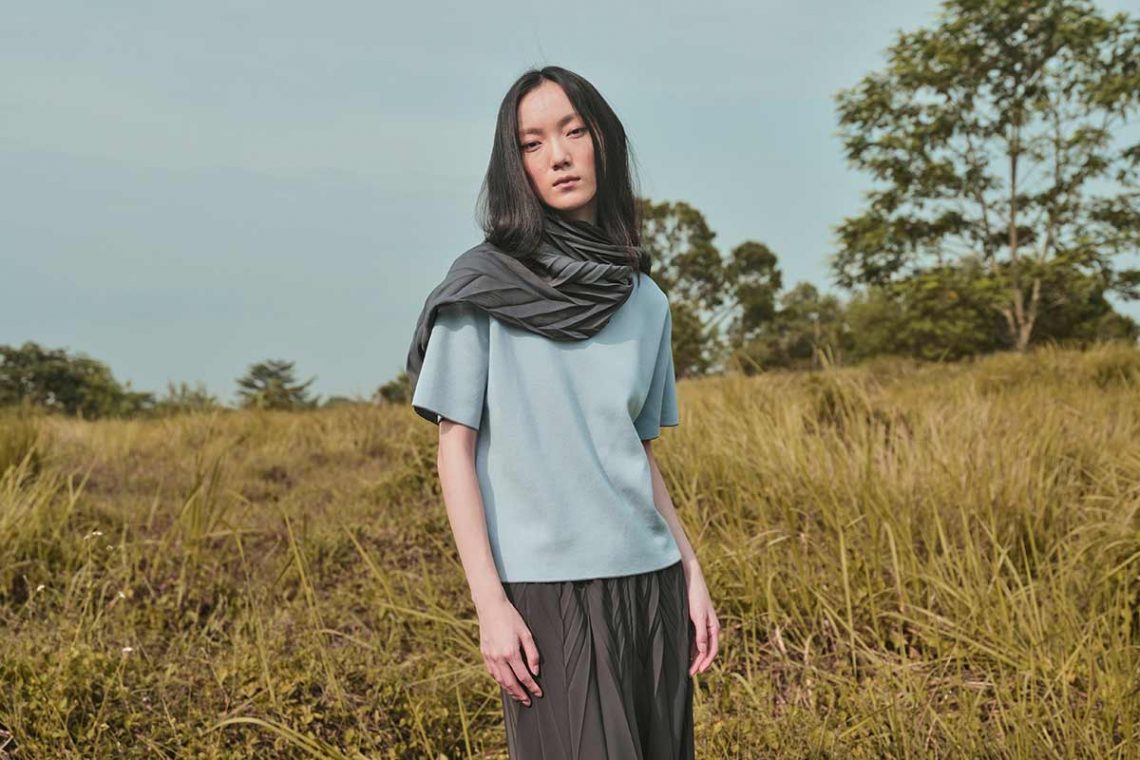
Finding the right balance
They developed the idea for their MAKE In Shop initiative during The Bridge Fashion Incubator programme run by the Singapore Fashion Council (then the Textile and Fashion Federation) in 2019. They explored the concept further in 2020 with the DesignSingapore Council’s (Dsg’s) Frame and Scope programme, which has since been discontinued. “There were good takeaways,” says Lee. She continues, “It helped us to close some key gaps and also gave us some frameworks that we still use today – for example, how to make the brand values coherent through all our touchpoints.”
But the nitty gritty of how to deliver the concept in stores was fully fleshed out with the support of Dsg’s Good Design Research (GDR) programme from 2020 to 2021. Lee and Niv used this opportunity to develop the MAKE In Shop production tools and craft the customer experience.
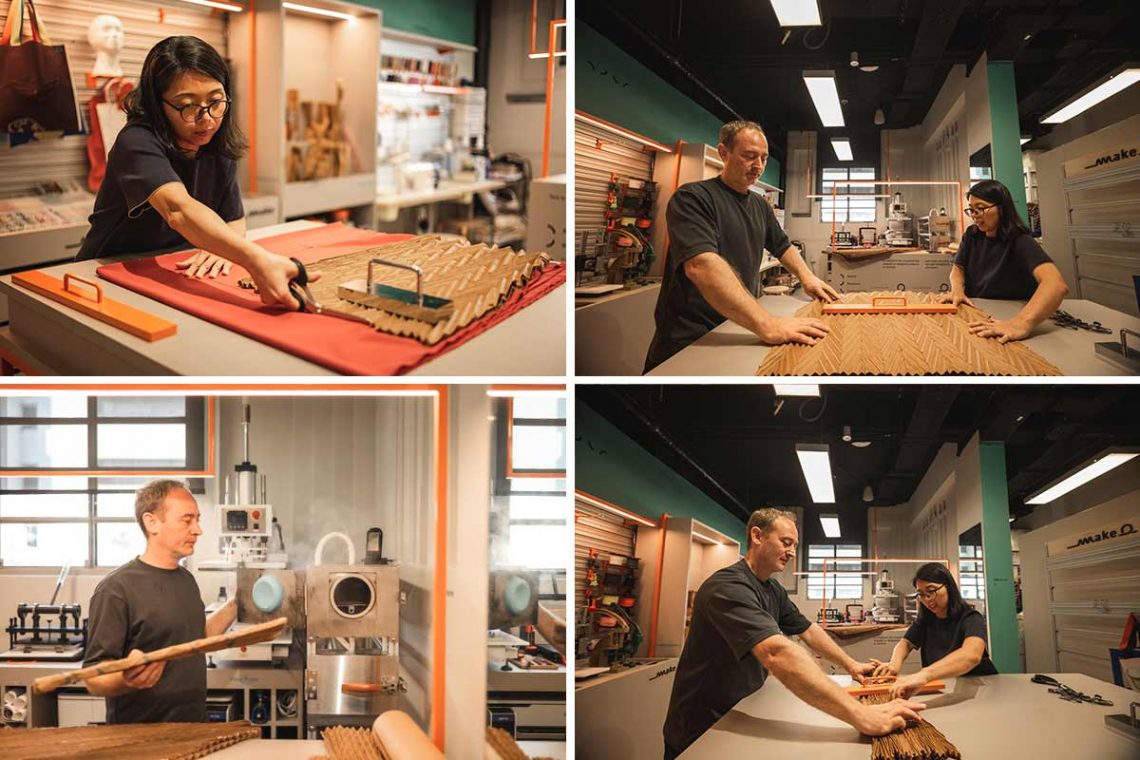
The MAKE In Shop concept takes advantage of the potential of pleating to control the design of simple small items such as bags, scarves, and t-shirts, thereby reducing the number of base units that need to be kept in stock. The idea is to engage customers in the process of pleating items inside the store. The customer selects the pleating design, is assisted with preparing the pre-stitched base textile unit for steaming in a readymade mould, and then finishes the pleated item with accessories such as straps in a colour of their choosing.
“If you make exactly what the customer asks for, then there’s no waste,” says Niv. “It’s also immediate. Within an hour and a half, you can have a product. The customer can even have an experience,” he adds. No technical skills are required for participation.

We wanted it to be more transparent, so people can see what it takes to make something. MAKE In Shop is like an open kitchen concept for making pleats.
– Tamir Niv
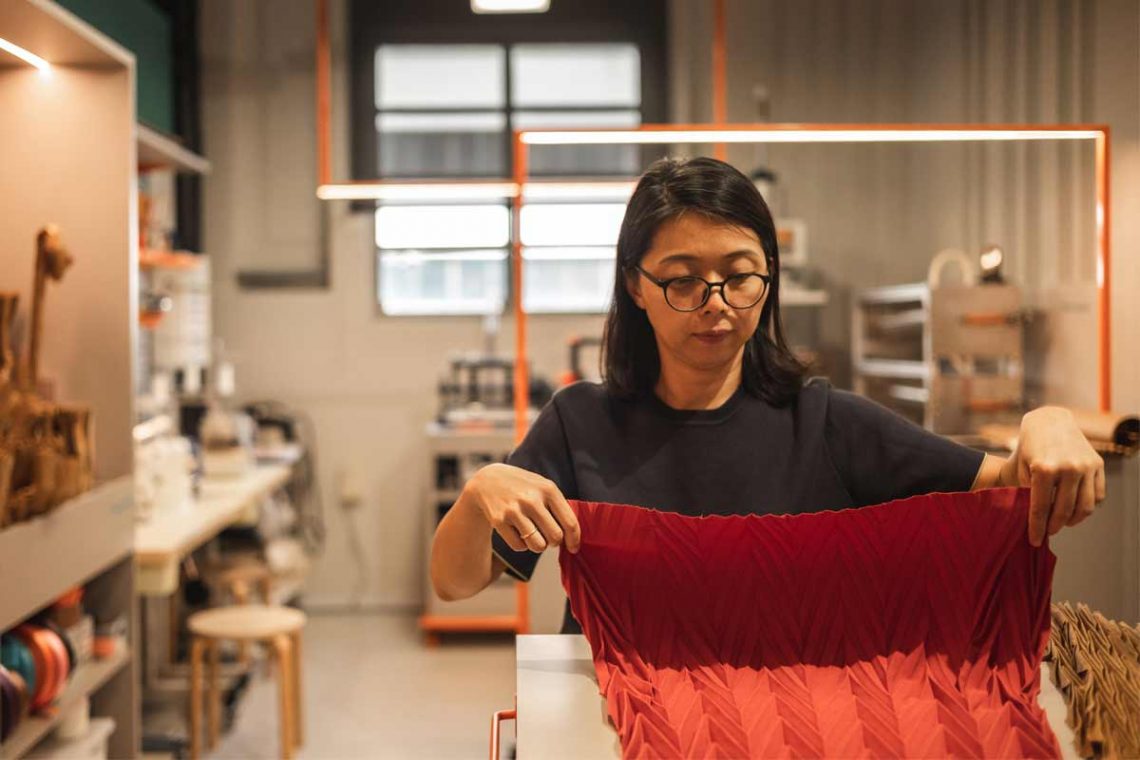
Designing the tools, the process, and the experience
The brand had previously outsourced all its pleating overseas. Bringing the pleating process into the store meant bringing pleating equipment into the retail environment too. “There was no off-the-shelf option for the steamer. There are industrial machines that are pressurised and too dangerous to put into a shopping mall. We needed something efficient in its consumption of electricity and water, so we designed it,” explains Niv, whose industrial design background made such an endeavour feasible.
Folding the paper moulds is one of the most arduous steps in producing pleated items, and Niv used the opportunity afforded by the GDR programme to explore two methods for optimising this process. Firstly, he trialled scoring with a computerised numerical control (CNC) milling machine – using a round-edged nib instead of a milling bit. He found that scoring on both sides of the paper, such that the fold lines become directional, made folding the paper mould much quicker, and the mould lasted longer (with less tearing) than a laser-scored counterpart
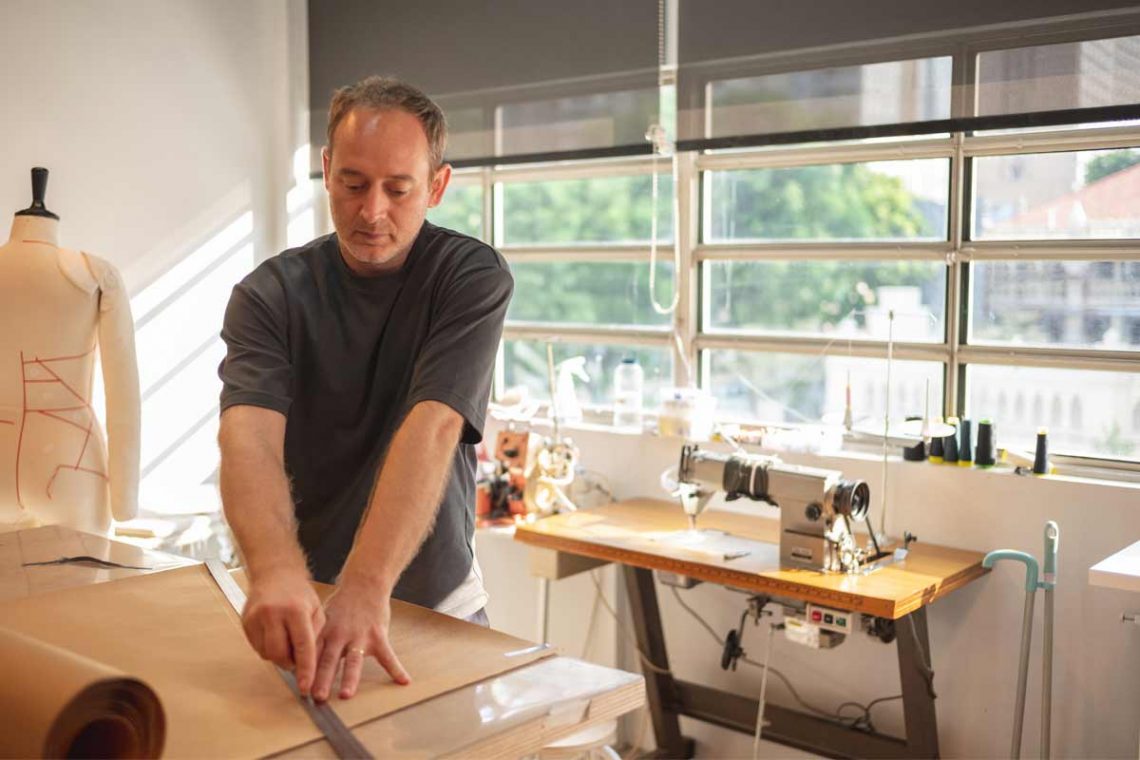

If I produced a paper mould entirely by hand, it would take one day to score and fold. With the double-sided die cutting, I can fold a mould in one hour.
– Tamir Niv
Secondly, he developed a prototype set of 3D-printed metal roller moulds that would allow scaling of production via a less manual approach to pleating. While successful in pleating paper moulds, the use of the roller moulds to pleat textile under heat requires further development.
As important as the means of delivering the products in the MAKE In Shop initiative, is the means of delivering the customer experience. Lee and Niv quickly realised that by changing the traditional sales role into a sales-maker role, they also changed the image of that job, and the expectations that customers have of the role.
“This is something our mentor, Low Cheaw Hwei, pointed out during the GDR programme,” Lee recalls. “He said, ‘Hire design graduates. Show them how to do this.’ Designers have the understanding that allows them to bridge the gap with the customer – they can do the storytelling and the making; they can appreciate what we’re doing because they believe in what we believe in – that you can design everything if you put your mind to it,” she says.

Customers can now experience MAKE In Shop at GINLEE’s Great World City and Raffles City stores, but the vision of Lee and Niv is to allow for such immediate on-demand production of a range of clothing as well – larger steamer units being the hindrance. The Co-founders also wish to optimise their production of different garment sizes using pleats rather than cutting the textile into a range of proportions. “That was the original idea for MAKE In Shop, but we haven’t had time to see it through yet!” says Lee.

Pleating makes sense for us as a cross-disciplinary design set up. I’m more focused on the silhouette. Tamir helps me develop the structure of the garment and builds the pleats according to the shape of the silhouette.
– Gin Lee
Make it circular
With MAKE In Shop up and running, Lee and Niv embarked on a new circular initiative this year, which they have titled MAKE O. Extending the waste minimisation strategies of MAKE In Shop, MAKE O upcycles unwanted items, such as textile offcuts and old t-shirts, into new products. The MAKE Studio at NDC, which is fitted out with work benches, a steamer, an ink-based printer, and a 3D printer, is the epicentre for the three MAKE O Experiences that customers can book.
The first of these is cOts, which is short for ‘Coloured on the Spot’ – an initiative for producing bags in three sizes from base textile pieces in a singular neutral shade, which is printed with the customer’s preferred colour on demand.
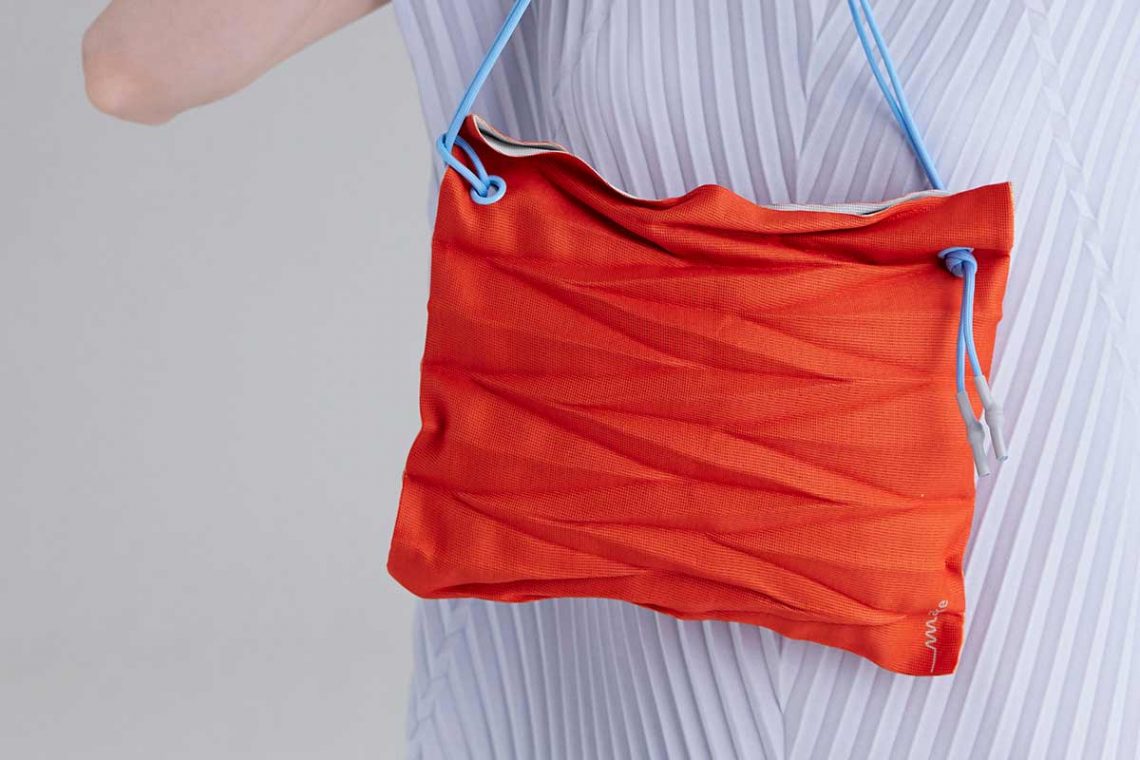
Textile offcuts are harnessed for the second MAKE O Experience, in which customers create their own pOcuts – utility pockets die-cut from textile offcuts and finished with a snap-together clasp that is 3D-printed in the MAKE Studio from recycled plastic. The third MAKE O Experience, titled The tee-tO-Bag Experience, sees customers upcycling their own old t-shirts into bags.
The MAKE Studio is also used by the GINLEE Studio team as a repair space, with customers invited to bring in their used GINLEE Studio pieces for re-pleating and alterations, for a small fee.
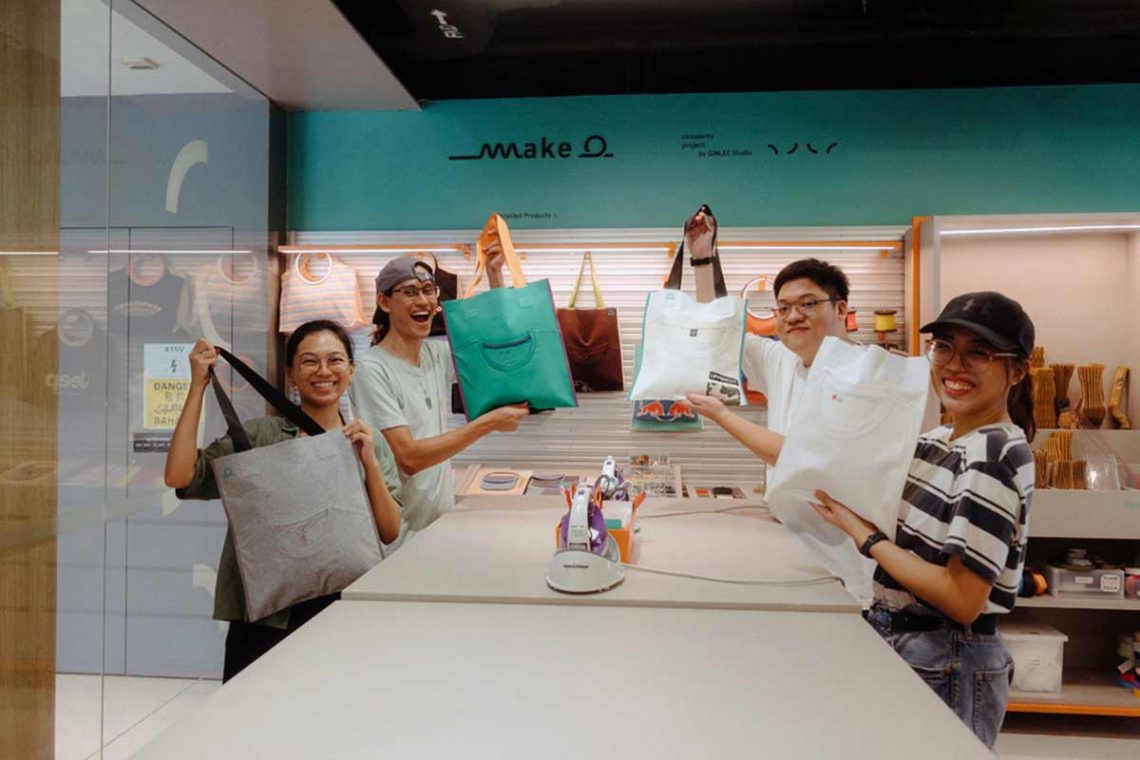

We’re not selling you the product. We’re selling you the experience. You’ve got to bring your own t-shirt. You make the product with our design. It’s a completely different business model.
– Gin Lee
Waste not, want not
The next issue that Lee and Niv wish to resolve is what they could do with the paper left over from the cOts printing process – small sheets that are beautifully coloured with remnant ink. Beyond recycling, Niv is quick to suggest ang pows (festive envelopes) but acknowledges the challenge of perception. “Can we upcycle a used product so people see it as something new?” he asks. Lee adds, in reference to The tee-tO-Bag Experience, “If I bring my own used product and convert it to something new, is it still considered second hand?”
They conclude that perceptions toward new and used goods are changing in the younger generation of Singaporeans, and the MAKE O initiative is a journey requiring a persistent analysis of outcomes – much like the journey of GINLEE Studio overall.

Lee and Niv never set out to present themselves as a sustainable fashion brand. Indeed, proponents of natural materials, for example, could be critical of their choice of textiles – a range that includes polyester, cotton, silk, recycled polyester, nylon, and spandex. Suggests Lee, “We don’t need to make another organic cotton t-shirt to be sustainable. We prefer to make a small number of interesting pieces that truly feel like they need to exist.” GINLEE Studio’s release of new styles is far from frenetic, but in today’s climate, successfully sustaining a slower pace is far more aspirational.

Materials are our tools. We look at what a material can do rather than opting for an organic material for the sake of ticking a box. Can we reduce the waste? Can we not make something if we don’t need to? This is the route we take.
– Gin Lee
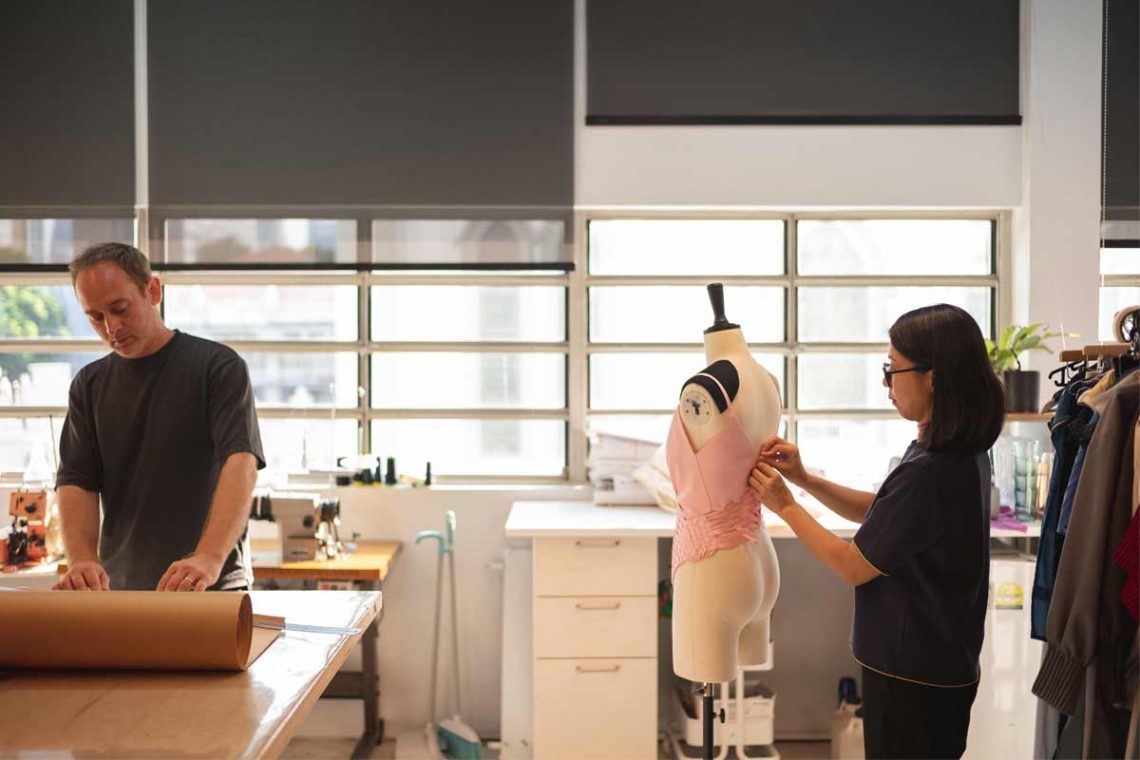
Read our unfolding series of stories on creative discovery and making life in Singapore ‘Better by Design’.
